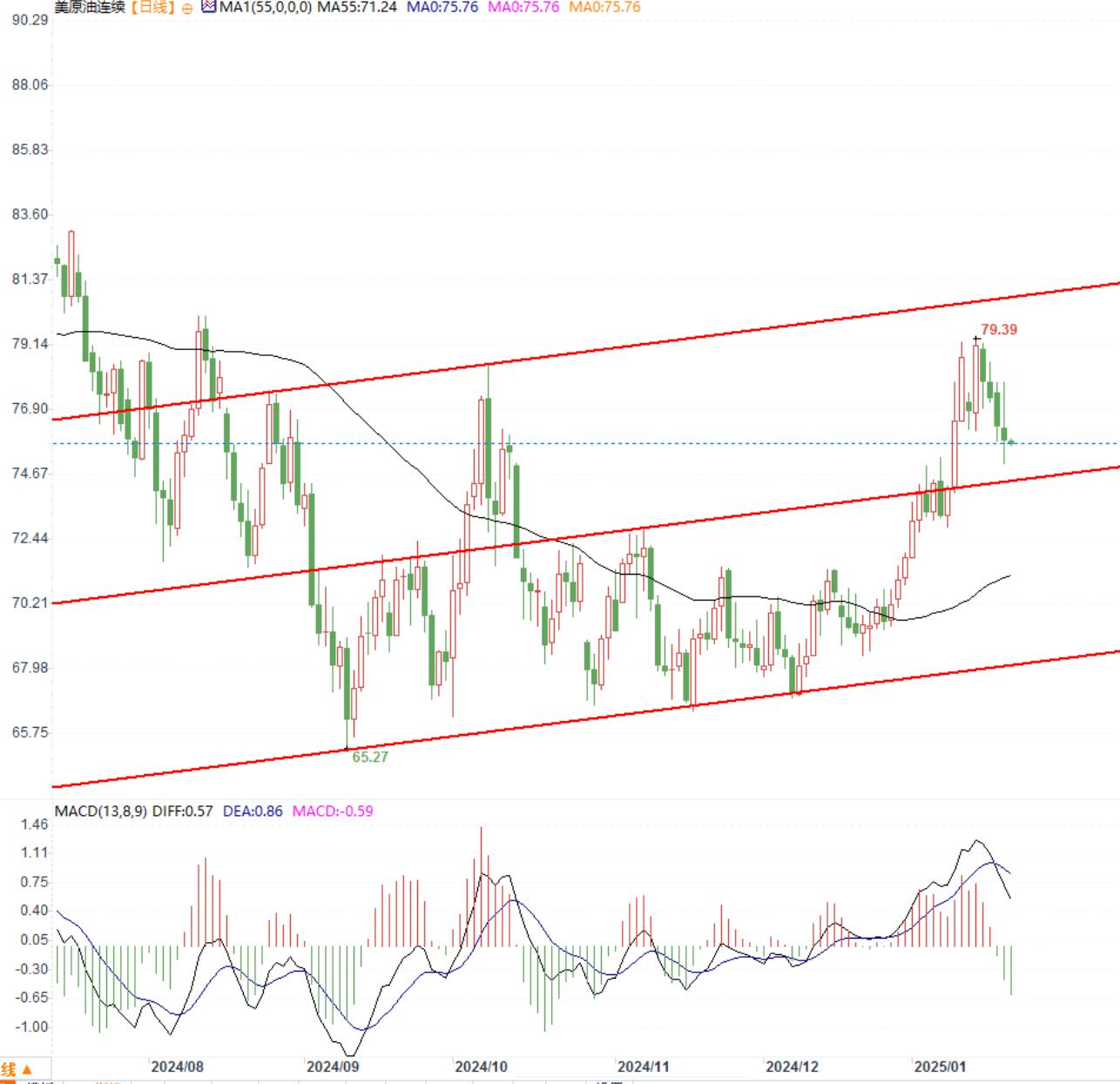Crude oil trading reminder: Worries about oversupply are putting pressure on oil prices. Is there still a chance for a rebound?
On Wednesday (January 22), US crude oil continued to decline during the Asian trading session, trading around $75.73 per barrel. Fundamentally, US President Trump declared a national energy emergency on his first day in office, causing concerns in the market about increased US production. The market generally expects an oversupply this year.
At the same time, there is also a possibility of easing the geopolitical situation. Regarding further easing of supply side pressure, the US Energy Information Administration (EIA) reiterated on Tuesday its expectation of a decline in oil prices in the next two years.
On a technical level, due to the previous significant strengthening and large deviation of the moving average, there is a need for correction, resulting in a short-term resonance adjustment between fundamentals and technical aspects. However, the structure of this round of rebound has not been destroyed, so there is an opportunity for a second rebound in oil prices.
The main focus is on changes in US policies and changes in supply side pressure sentiment. There is relatively little data for this trading day, so pay close attention to the changes in EIA inventory data for this week.
Mizuho analyst Robert Yawger said, "Ultimately, there is no shortage of oil," pointing out that US oil production is at record levels and OPEC+is still reducing production by approximately 5.86 million barrels per day. "What is lacking now is demand," he said
He said. If refineries don't need to produce more fuel, they won't buy crude oil“
Slovak Prime Minister: Discussions on Ukraine's accession to NATO will undermine any peace talks
On January 21st local time, Slovak Prime Minister Fizo stated that discussions regarding Ukraine's accession to NATO would undermine any peace negotiations and should be postponed. On that day, Fizo met with visiting Hungarian Prime Minister Orban to discuss energy security and the Ukrainian crisis, and subsequently held a press conference.
The two prime ministers have reached a consensus on Ukraine's vision for the EU and NATO: the two countries do not support Ukraine's accession to NATO and believe that Ukraine's accession to the EU should also first meet certain conditions.
The probability of the Federal Reserve cutting interest rates in January is close to 0.3%, and the probability of a rate cut in January is 26.4%
According to CME's "Federal Reserve Watch", the probability of the Federal Reserve keeping interest rates unchanged in January is 99.5%, and the probability of cutting interest rates by 25 basis points is 0.5%.
The probability of maintaining the current interest rate unchanged until March is 73.6%, the probability of reducing interest rates by 25 basis points cumulatively is 26.3%, and the probability of reducing interest rates by 50 basis points cumulatively is 0.1%.
The current market's expectation of the Federal Reserve not cutting interest rates in January has been fully priced, and the main focus is still on observing changes in the expectation of a rate cut in 2025.
The market is weighing the national energy emergency declared by US President Trump on his first day in office and its impact on supply. On Monday, Trump formulated a comprehensive plan aimed at maximizing oil and gas production, including declaring a national energy emergency to speed up approval, revoking environmental protection measures, and withdrawing the United States from the Paris Climate Agreement.
Morgan Stanley analysts wrote in the report that this policy is unlikely to stimulate recent investment or alter US production growth, but it can mitigate potential erosion on demand for refined oil products.
Analysts also question whether Trump's promise to refill strategic reserves will have any impact on oil demand, as the Biden administration is already purchasing oil for emergency reserves.
Due to Trump's trade policies remaining unclear, investors are also cautious. Trump said he is considering imposing a 25% tariff on goods imported from Canada and Mexico starting from February 1st, instead of imposing it on his first day in office as previously promised.
Meanwhile, a rare winter storm ravaged the Gulf Coast of the United States on Tuesday, leaving much of the country in dangerously cold conditions.
On a technical level, the daily trend of US crude oil continues to decline, but it has not fallen below the central axis support of the upward channel. In the short term, we should pay attention to whether there is a possibility of stabilization and rebound near the $75 integer level.

Tips:This page came from Internet, which is not standing for FXCUE opinions of this website.
Statement:Contact us if the content violates the law or your rights
